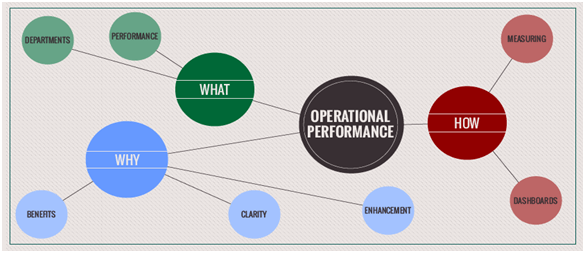Procurement professionals should identify and implement technology that aides the procurement process and supports the overall strategy of the organization. The technology should create measurable results (linked to Return on Investment) including, reduced transaction costs, improved process efficiency, a reduction or elimination in “maverick spending”, increased contract compliance, improved transparency, reduced cycle times and improved inventory costs. Technology can also increase supplier access to bid opportunities which can result in increased competition, diversity and inclusion of suppliers.
Table of Contents
Electronic Procurement
Electronic procurement (E-Procurement) can be defined as the purchase of goods and services that enable the business to run its daily activities or the automation of business processes and procedures with the goal of saving business costs.
Electronic Integration in Business
Enterprise Resourcing Planning (ERP) is a process used by companies to manage and integrate the important parts of their business to implement by integrating all the processes it needs to run a company with a single system.
Workflow management system is a complete solution in material e-procurement process. It allows for completely tracking and management of material, goods, services, resource ordered, procured in along with in stock and out of stock items. Some of the key processes include the following area:
o Request for Quotation Creation
Request for Quotation (RFQ) is used to enquiry in the market to obtain quotation from prospective vendors. RFQ can be created with reference to Purchase Requisition, Outline Agreement (Contract) and another RFQ.
o Electronic Bid Submission
Electronic bid evaluation is the process involves the opening and examining of the bids to identify the preferred supplier(s) for the project.
o Reverse Auction
A reverse auction is a type of auction in which the traditional roles of buyer and seller are reversed. Thus, there is one buyer and many potential seller.
o Bid Evaluation
Bid evaluation is the process that takes after the tender submission deadline. It involves the opening and examining of the bids the preferred supplier(s) for the project.
o Vendor Selection
Vendor-selection process being with the gathering data or perform interviews, assemble a team of people who have a vested interest in this particular vendor – selection process.
o Vendor Management
Vendor management is used when describing the activities included in researching and sourcing vendors, obtaining quotes with pricing, capabilities, turnaround times, and quality work, negotiating contracts, managing relations, assigning jobs, evaluating performance, and ensuring payments are made.
o Catalog Management
Catalog management is a dynamic process where products are organized in a specific way to ensure consistent and high-quality data across all sales channels. An online catalog provides product name, description, hierarchy, price and other related details.

Benefits of E-Procurement Tools
o Better Spend Visibility and Lower Cost
E-procurement structures spend across suppliers and centralized tracking, which helps leverage volume and lower costs for buyer. This allows firms to track cost reductions on a continuous basis and identify and address any compliance track vendor SLAs and implement scorecards. Leading to higher saving and increased productivity from suppliers.
o Operational Performance
E-procurement helps automate internal procurement processes such as purchase order tracking, RFX events and supplier evaluation, leading to higher operational efficiency. Since these activities can be completed without human intervention, it further reduces transaction time and helps expedite downstream processes.

E-Catalogues and Increased Standardization
Electronic catalogues make supplier product offering available electronically and provide buyers more visibility into product and price information.

Internal Integration
E-purchasing eliminates information asymmetries and improves collaboration across internal departments, providing maximum value to the organization.

Global Procurement
E-procurement applications support various currencies, languages and logistic options, providing the ease to source from countries across the globe.

Using Blockchain to Public procurement
Blockchain in Procurement is a technology that creates a decentralized record of all transactions in a network. Using blockchain technology, participants in the network can confirm transactions independently of a third-party intermediary.
The full content is only visible to SIPMM members
Already a member? Please Login to continue reading.
References
Zaiton Binte Abu Bakar, ADPSM. (2019). “Essential Strategies for Public Procurement”. Retrieved from https://publication.sipmm.edu.sg/essential-strategies-public-procurement-practices/, accessed 07/09/2019.
Eliza Huang Ziqi, GDPM. (2019). “Digital Procurement for the Banking Sector”, Retrieved from https://publication.sipmm.edu.sg/digital-procurement-banking-sector/, accessed 13/09/2019.
DocInfusion. (2018). “What is Business Integration in ERP”. Retrieved from https://docinfusion.com/blog/what-is-business-integration-in-erp/, accessed 07/09/2019.
Malcolm. (2001). “E-Procurement and its practices”. Retrieved from http://www.Operational+Performance+in+e-procurement, accessed 14/09/2019
Neil Miller. (2019). “Indent Workflow Management”. Retrieved from https://kissflow.com/workflow/workflow-management-system-10-must-have-features/, accessed 07/09/2019.
Source Suite. (2019). “Electronic Bid Submission”. Retrieved from http://www.sourcesuite.com/solutions/procurement-opportunity/electronic-bid-submission.jsp, accessed 07/09/2019.
Design Building. (2019). “Bid Evaluation”. Retrieved from https://www.designingbuildings.co.uk/wiki/Bid_evaluation, accessed 07/09/2019.
P M Project. (2018). “Vendor Selection Process”. Retrieved from https://project-management.com/the-5-phases-of-the-vendor-selection-process/, accessed 07/09/2019.
Ameer Rosic. (2016) “Blockchain the Technology”. Retrieved from https://blockgeeks.com/guides/what-is-blockchain-technology/, accessed 14/09/2019.

